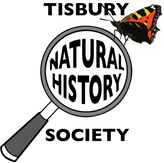|
After so much rain in March, as soon as the ground warmed up plant growth was rapid. So now the lanes are bursting with vegetation and flowers. Many roadsides are white with massed clouds of Cow Parsley, also known more flatteringly as Queen Anne’s Lace. In common with other umbellifers, this tall plant has large flat circular flowers made up of many smaller florets. It is extremely common and is found in all sorts of places, particularly along roadside verges. It appears to be particularly suited to this habitat where it starts to dominate other flowers. If, after mowing, the cuttings are left, the ground is enriched, and this combined with fertiliser from adjacent farmland allows strongly growing plants like the Cow Parsley to dominate. Although only a biennial, it produces lots of seed, so can spread easily. On the positive side, the plant’s mass of flowers is attractive to numerous insects including beetles, hoverflies, and butterflies.
Umbellifers are a large group and there are numerous species - good, bad and ugly - to be found in the countryside and garden. Most have white flowers but some are yellow or green while some cultivated varieties for the garden may be purple. Some, such Wild Carrot and Wild Parsley have been domesticated to give us food crops. The former, often found on chalky soils, is a lower growing plant with a collar of wonderful feathery bracts below the flower head. Its root does indeed smell like carrot but while it is far smaller than those we grow for the table, the badgers still like them enough to dig them out of our garden. Many of our culinary herbs, for example parsley, coriander and fennel are umbellifers as anyone who has had their plants bolt will have noticed. Those with a sweet tooth will appreciate Angelica, the stems of which are crystallised for cake and trifle decoration and also provides the flavour for Chartreuse liqueur. However, the hated Ground Elder is the bane of many a gardener’s life. Although not a large plant, once established its rhizomes spread easily making it hard to eradicate. But there are worse species. The Giant Hogweed, which was introduced from the Caucasus by Victorian plant hunters is particularly nasty. Its sap is phototoxic which means that on contact with it, your skin loses the ability to protect itself from sunlight, resulting in nasty blisters. And then there is Hemlock, most famously associated with the death of Socrates. All parts of this plant are highly toxic but fortunately it has an off-putting odour which keeps animals away and reduces the likelihood of humans thinking it might be edible. Umbellifers are such a large group, and quite difficult to distinguish without practice and good guidebook, it is better to avoid consuming any of them, just admire the mass of flowers and leave them for the insects to enjoy. by Andrew Graham Comments are closed.
|
Photo: Avocets (Izzy Fry)
The headers display photos taken by our members. Do get in touch via the Contact Form if you'd like to submit a photo for selection.
Archives
May 2024
Categories
All
|

 RSS Feed
RSS Feed